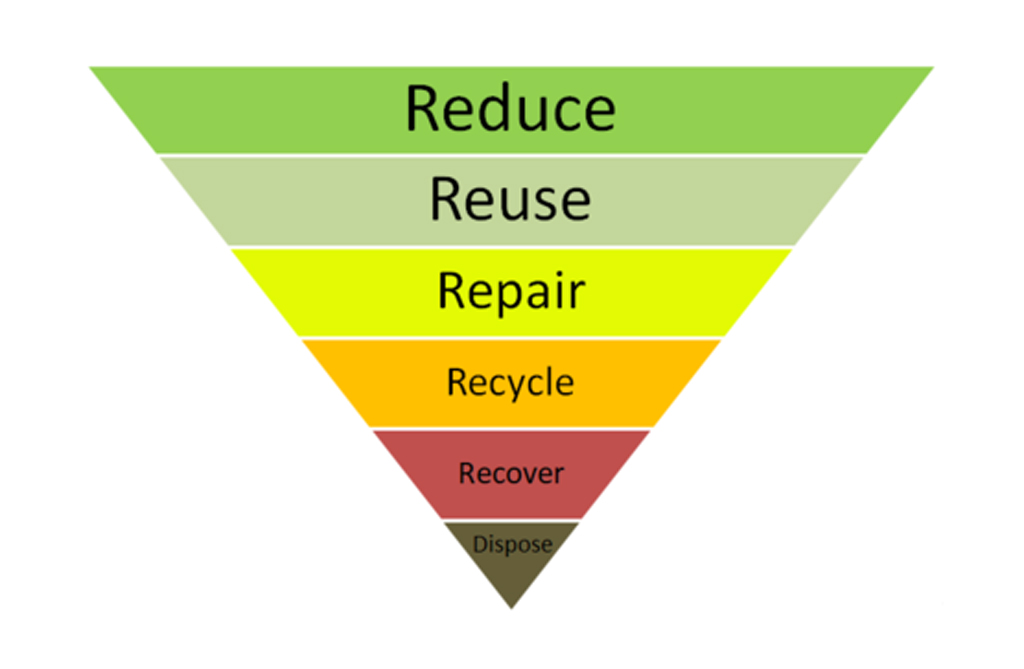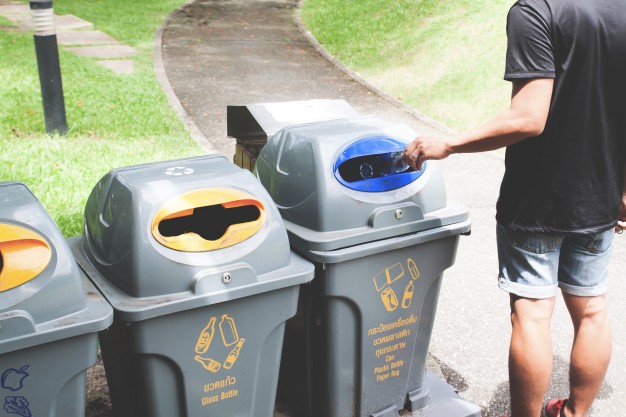The waste hierarchy is a 6-step process, often displayed in a pyramid style, to provide guidance for best waste disposal practices. Starting from the top of the ‘pyramid’, consumers are encouraged to work their way down each point of the list to help manage their waste better, with the final option in the chart, option 6, being the last resort. The “waste hierarchy” ranks waste management options according to what is best for the environment. It gives top priority to preventing waste in the first place. When waste is created, it gives priority to preparing it for re-use, then recycling, then recovery, and last of all disposal.

Reduce
The easiest and most eco-friendly way of managing your waste is to reduce the levels you produce, this is mainly done by purchasing or obtaining less, resulting in less waste.
Purchasing smartly, ensuring you are only buying what you need and not over-purchasing is the key to reducing our waste. Only buy necessary items, do shopping lists before heading to the supermarkets and avoid impulse purchases, all of which can lead to excess waste. If you do not need something, do not buy it.
Reuse
Many items, even those dubbed ‘single-use’ have a long life-span, allowing them to be re-used several times before they begin to lose purpose. Re-using items will help reduce your waste levels – items like water bottles, plastic bags, food containers are all made from robust material and have great longevity. Even items that cannot be re-used for their initial intended purpose can often be re-used for other purposes.
Repair
A lot of items get thrown away when they become damaged. However, many of these items can be easily repaired, so they are fit for purpose once again. Before disposing of your broken items, repair should always be considered, whether this is an electronic item, sporting equipment or clothes – there is usually always a way these items can be fixed.
Recycle
Stage four is recycling, when it comes to disposing of your waste (if you cannot follow steps 1-3) the first thing you should do is figure out if it can be recycled. The vast majority of items are now easily recyclable either in your home kerbside recycling collections or at specific recycling points. If you are ever unsure whether an item can be recycled or not, a simple bit of research will give you the answers. If your item cannot be recycled and you no longer need it, sell it to someone who will make use it of or even give it to a charity shop or donation bank.
Recover
Recovery which can often be referred to as “waste for energy”, is a process where waste is transformed into energy through a range of processes including incineration (burning waste to create electricity), anaerobic digestion (microorganisms break down food and other organic waste to produce biogas) and landfill gas recovery (collecting the methane given off by landfill). This helps stop waste being sent to landfill by transforming it into forms of energy.

Dispose
The final step, and last resort when it comes to waste management is disposal. This level of the waste hierarchy refers to landfilling or incinerating rubbish without recovering the energy. Disposal should only be considered if you cannot follow any of the above steps instead, this is the worst option sustainably and should be avoided at all costs. But if disposal is the only option, it must be done responsibly in the bin, without littering.